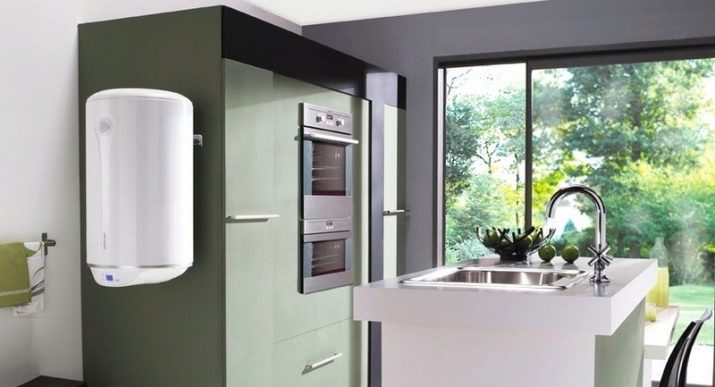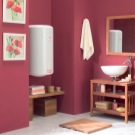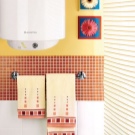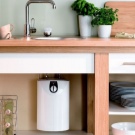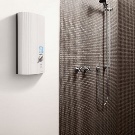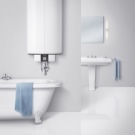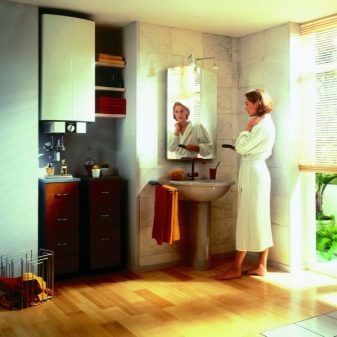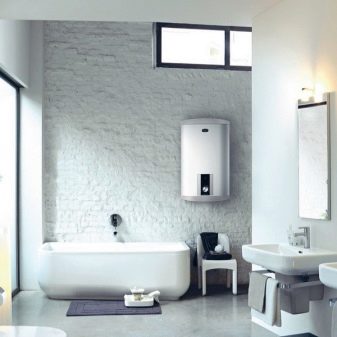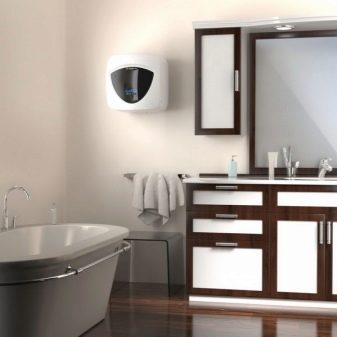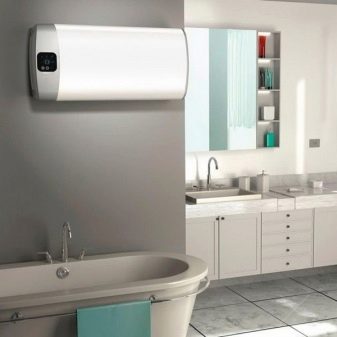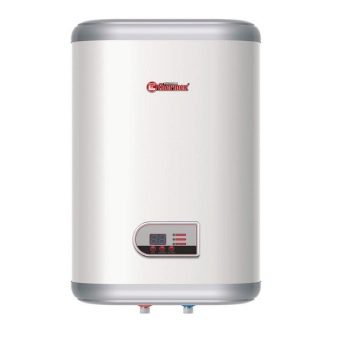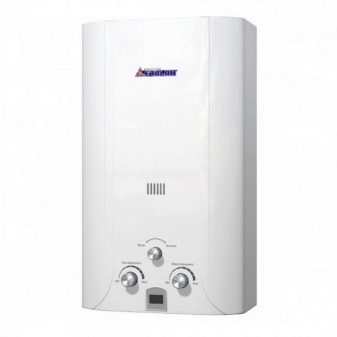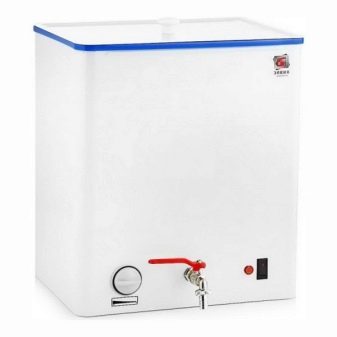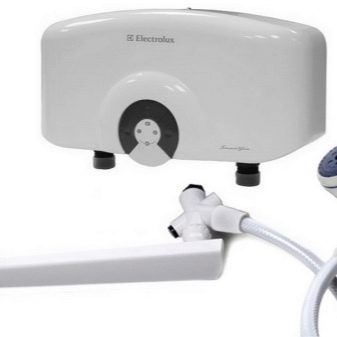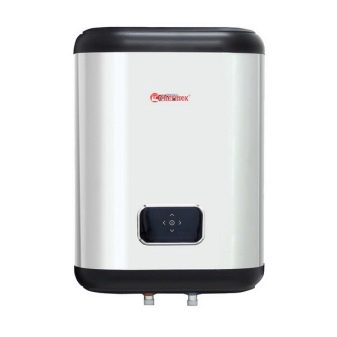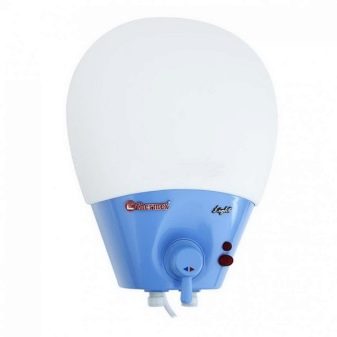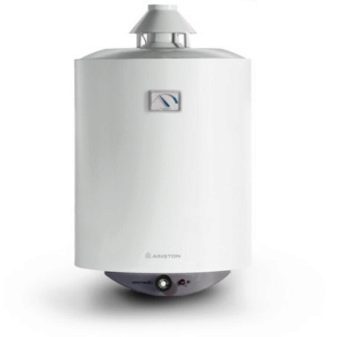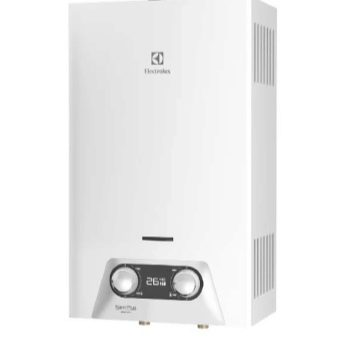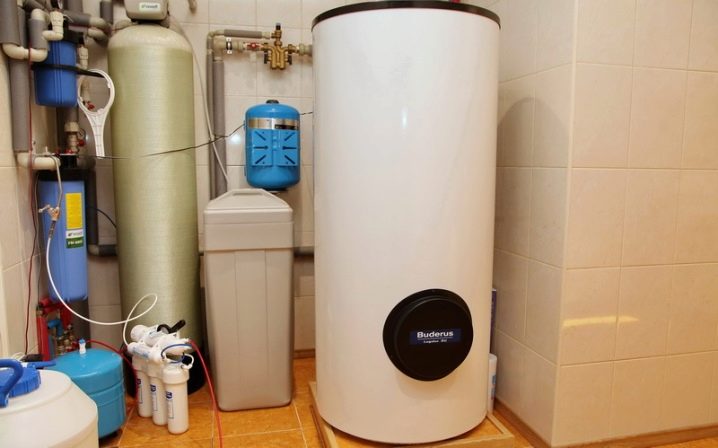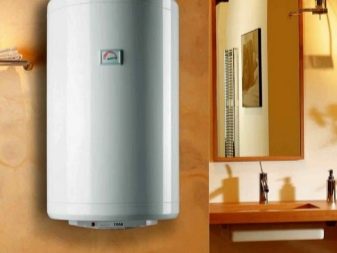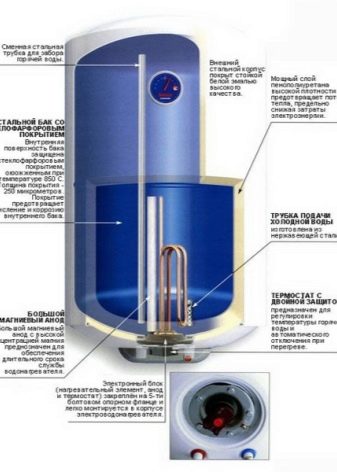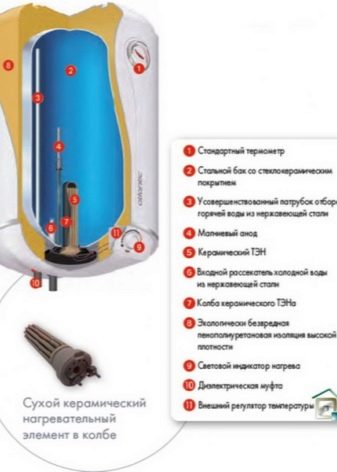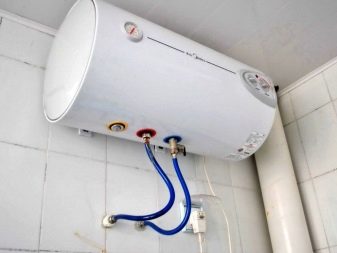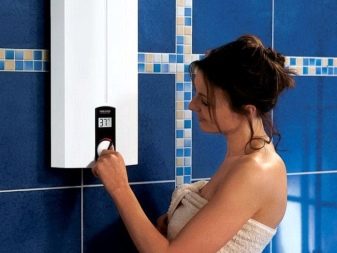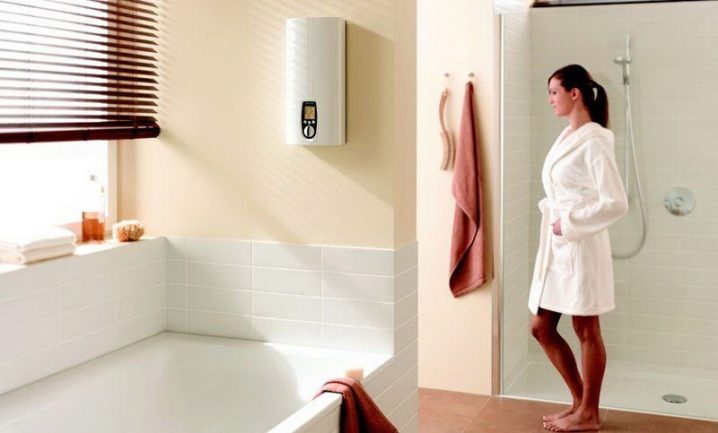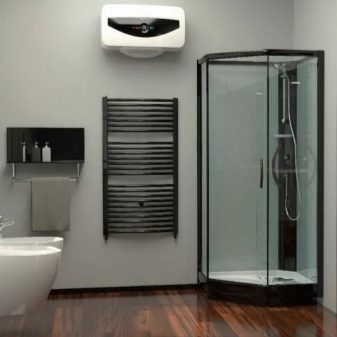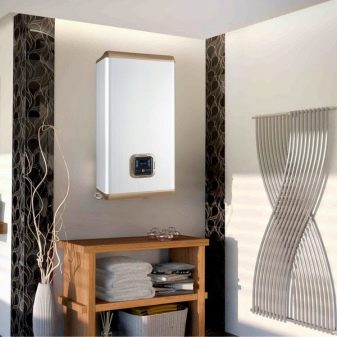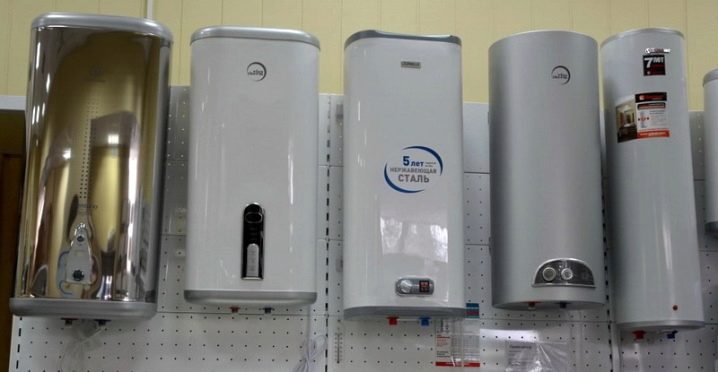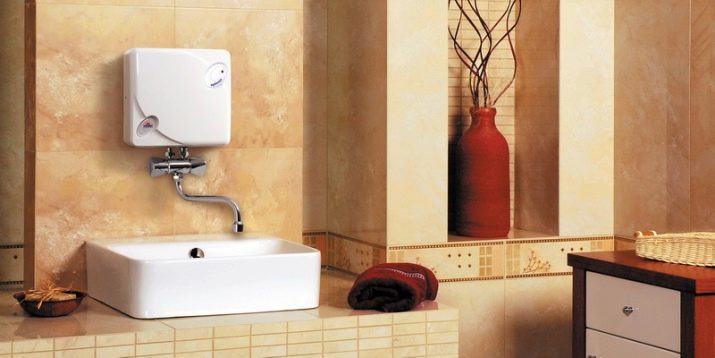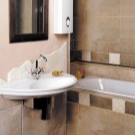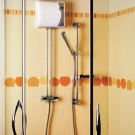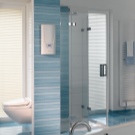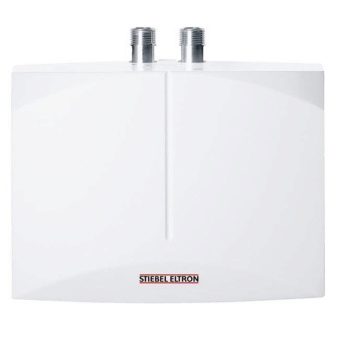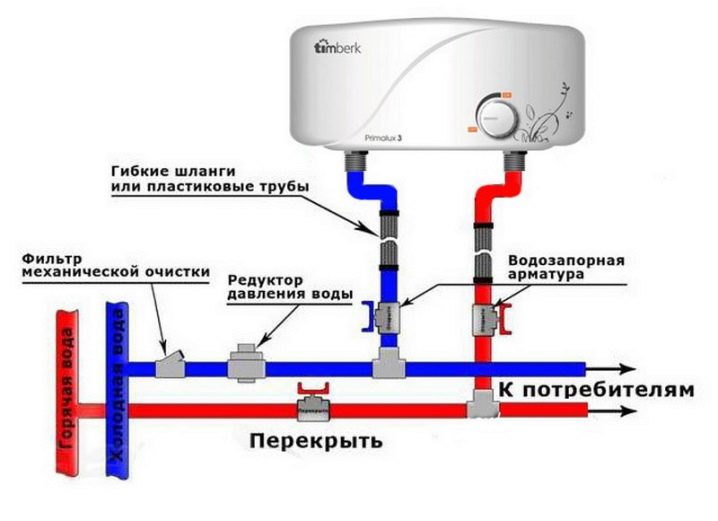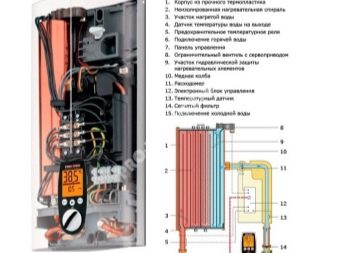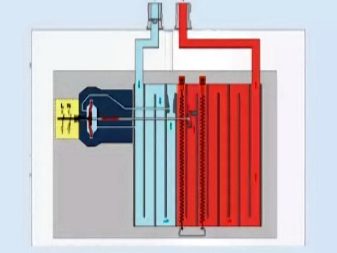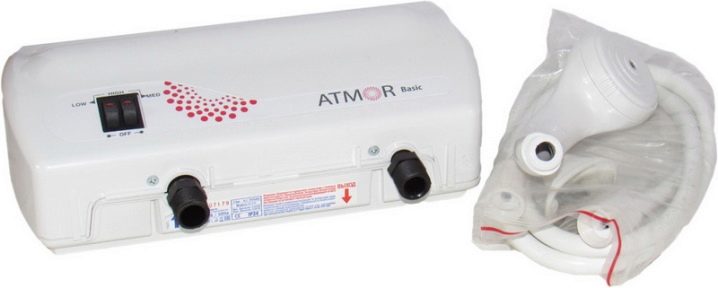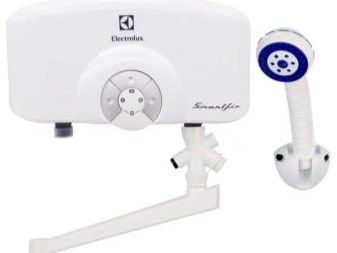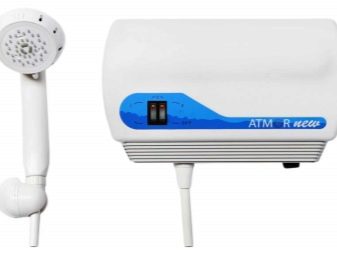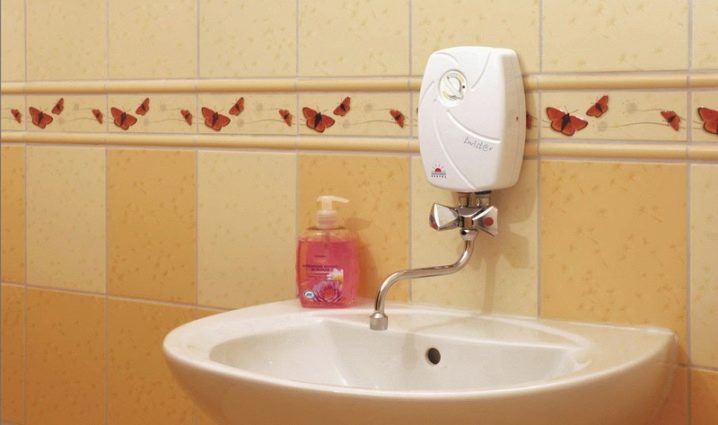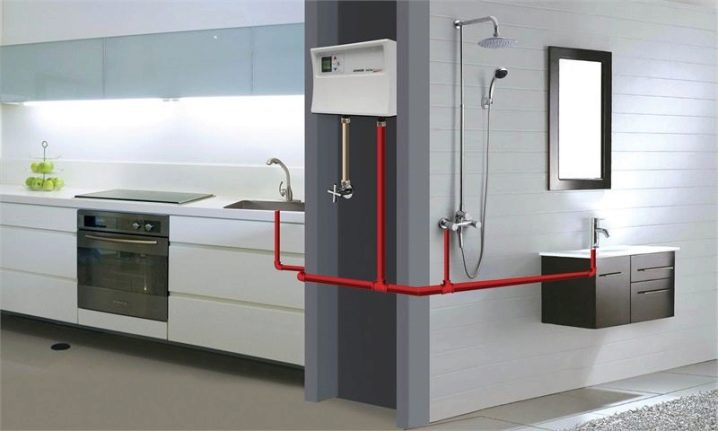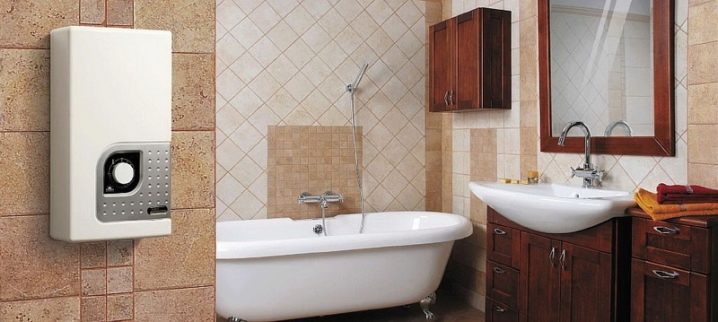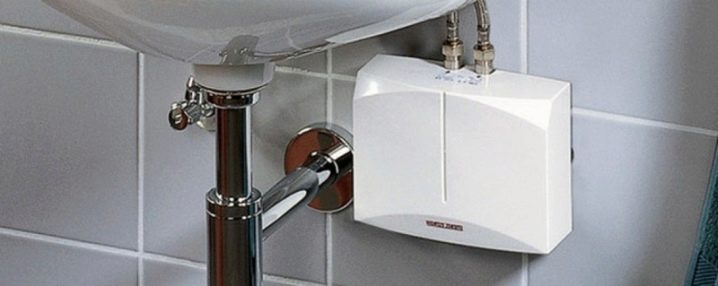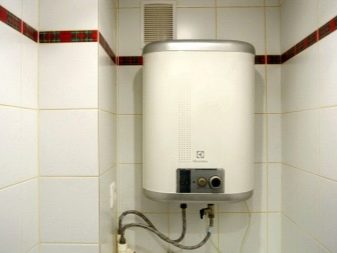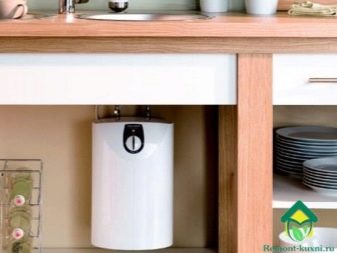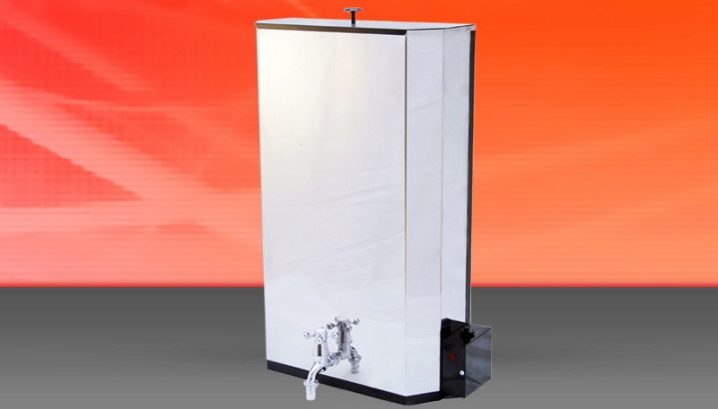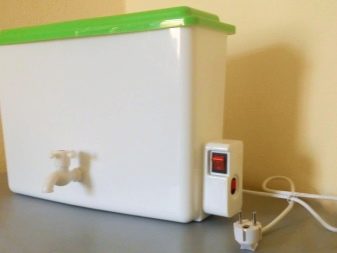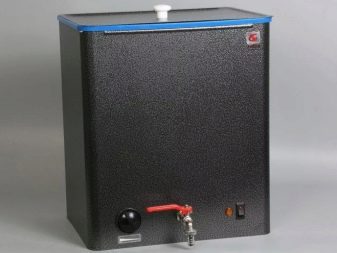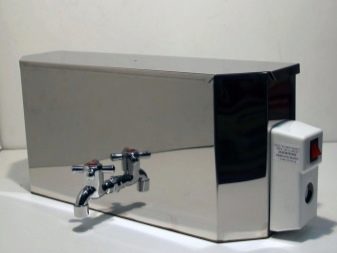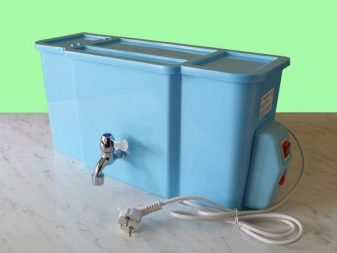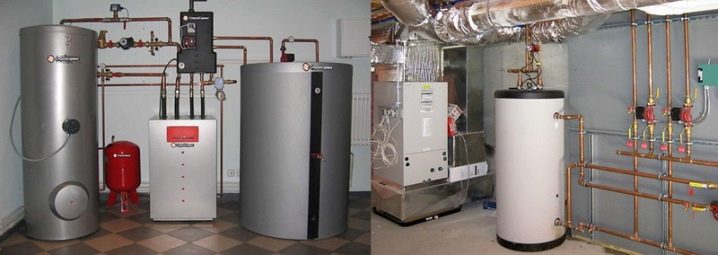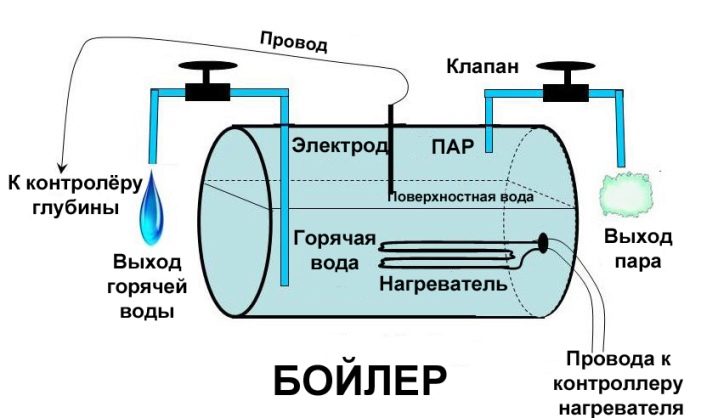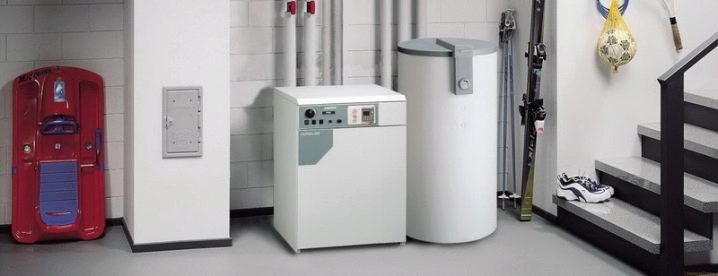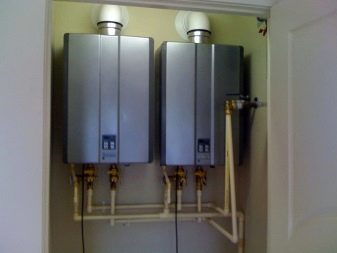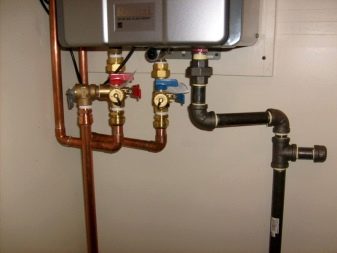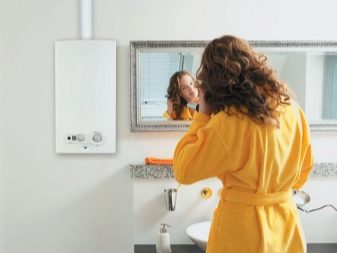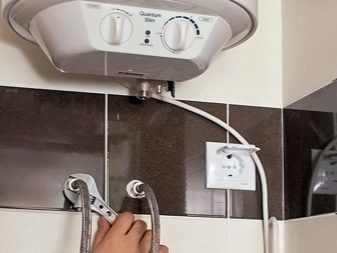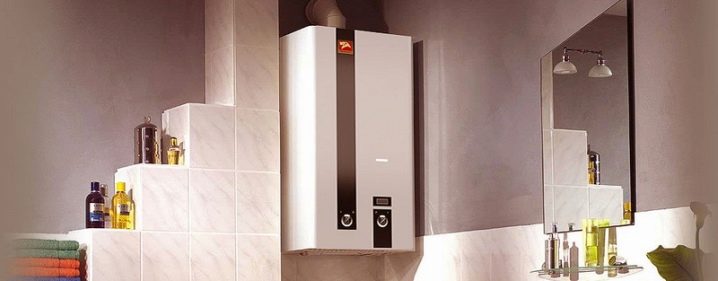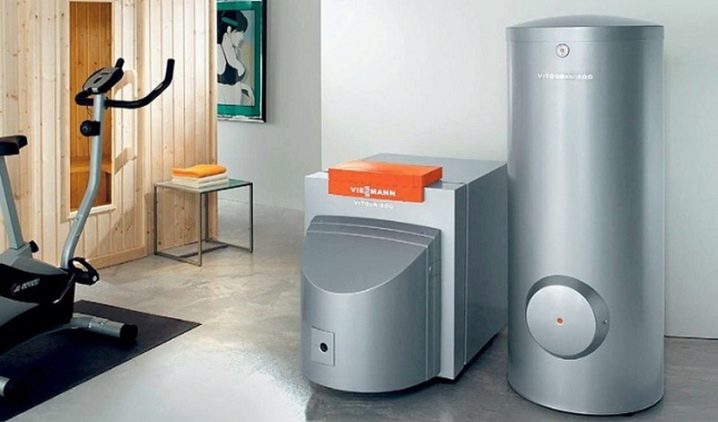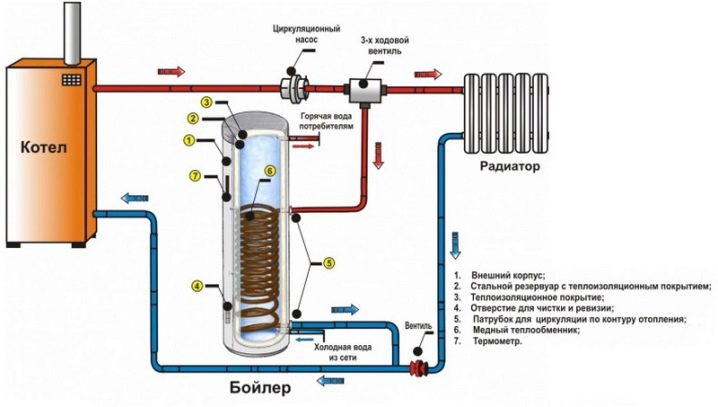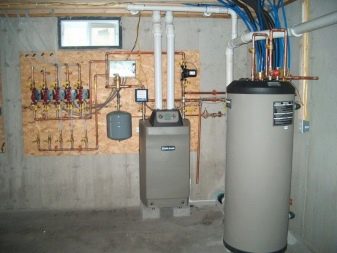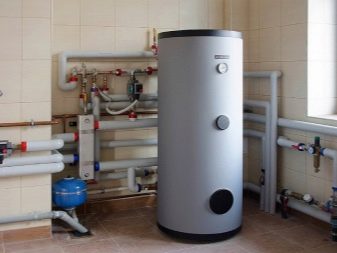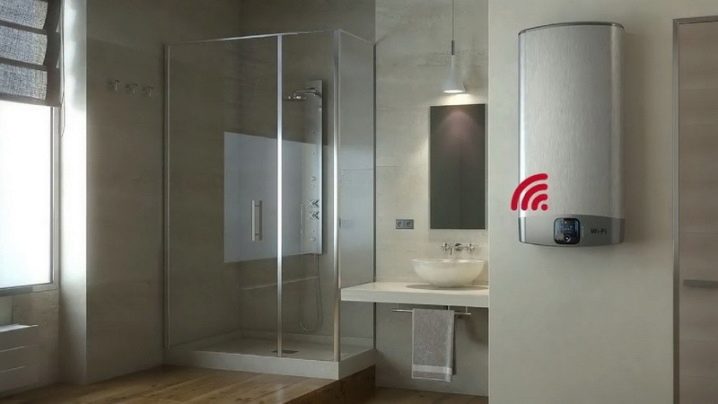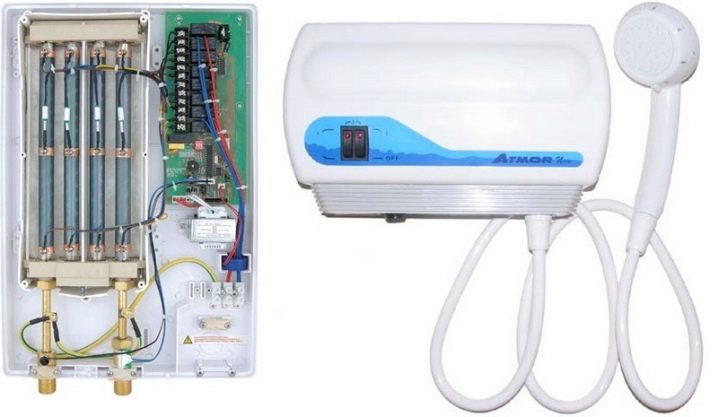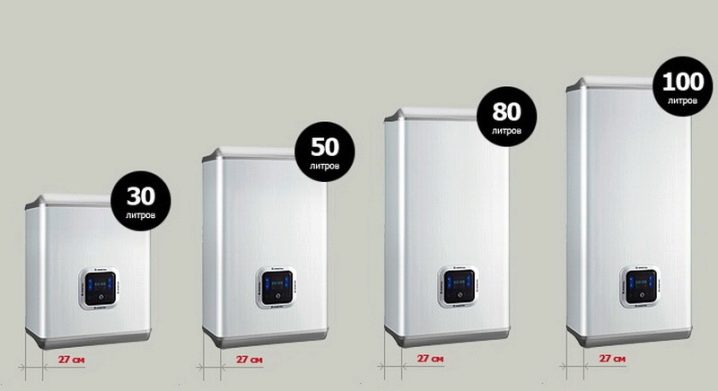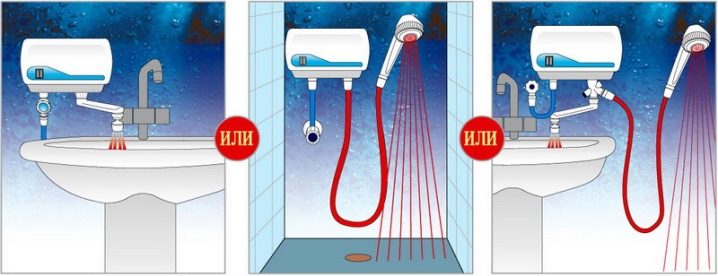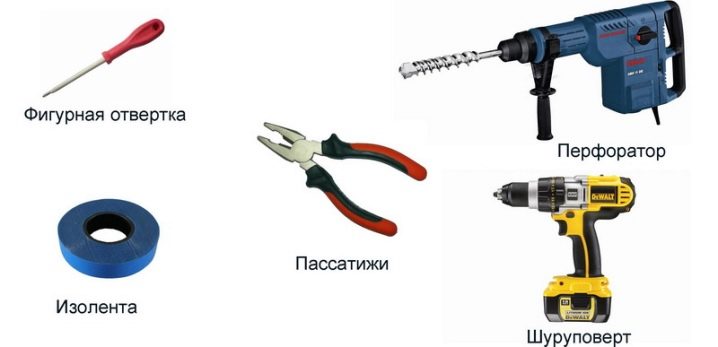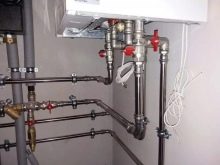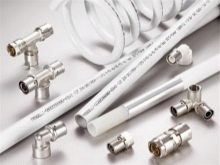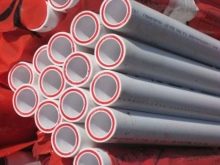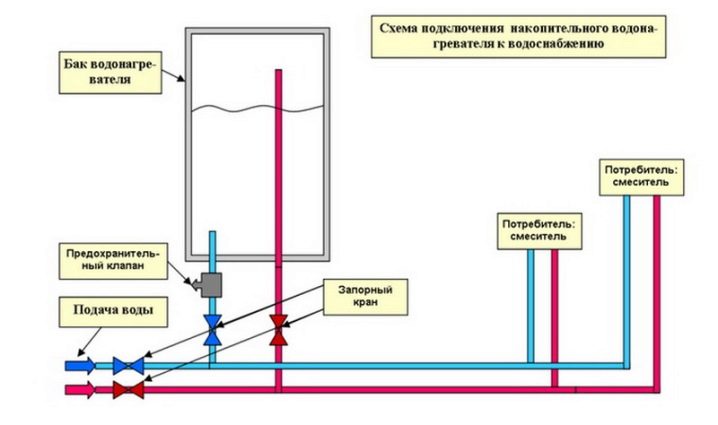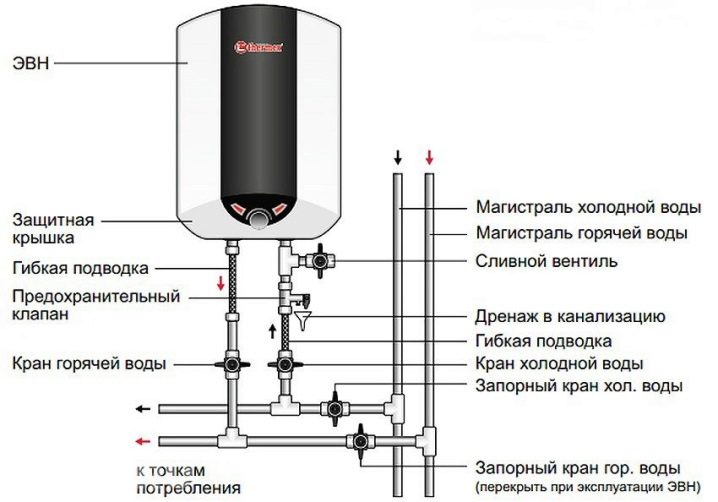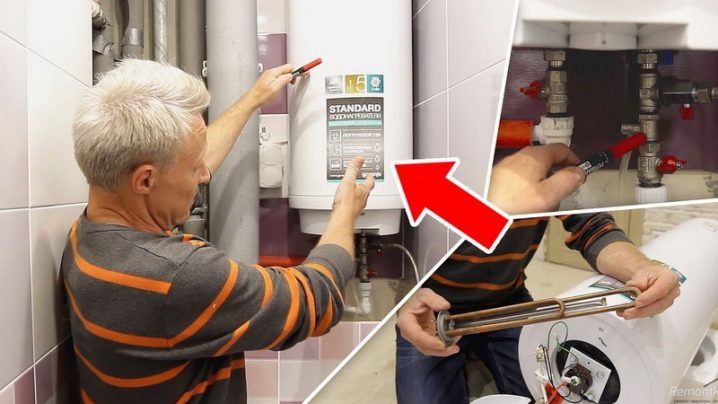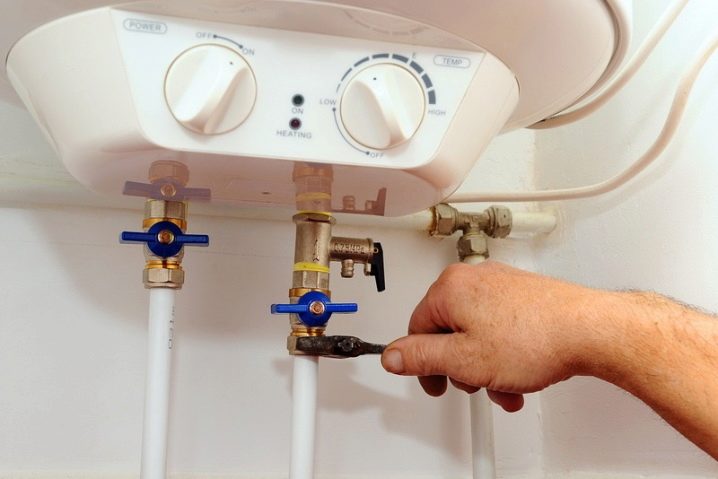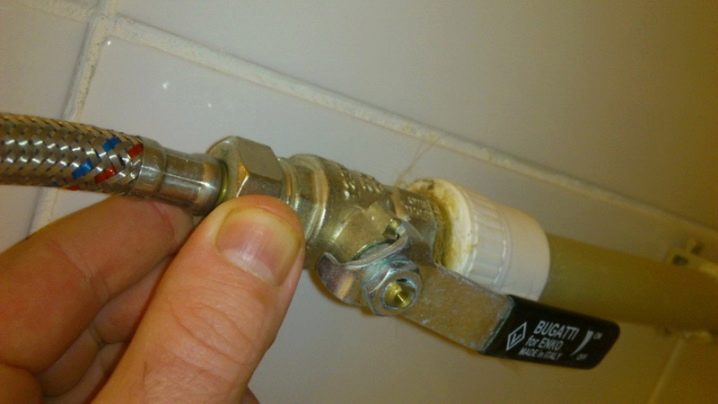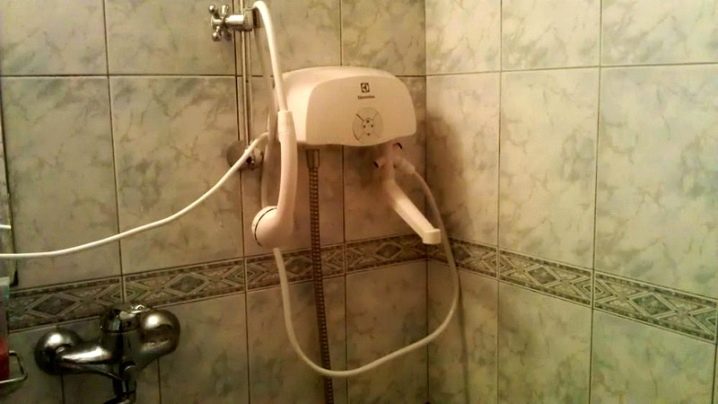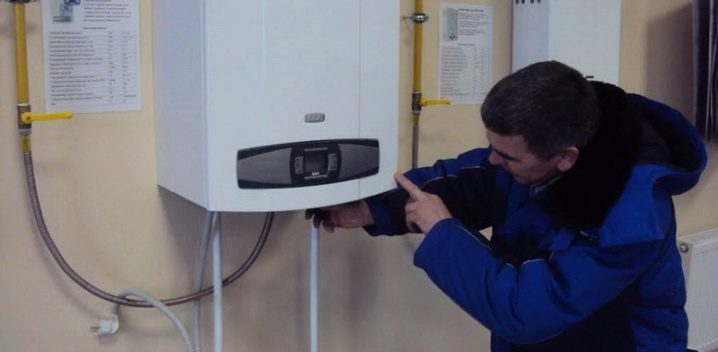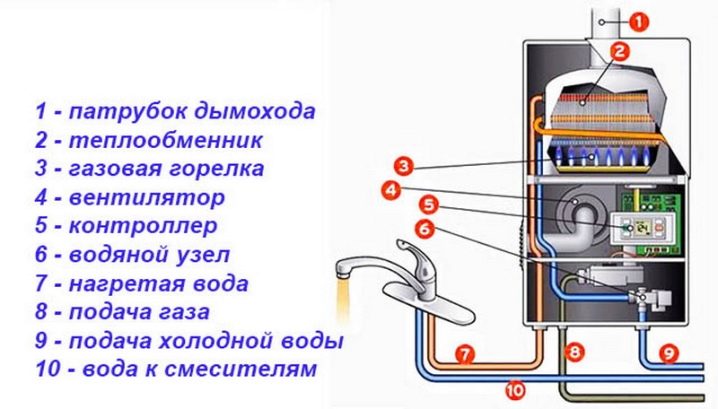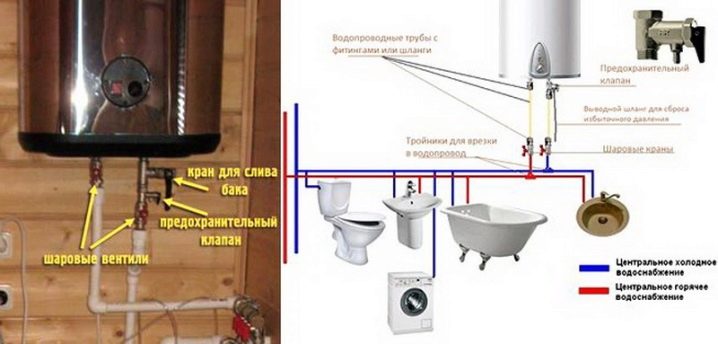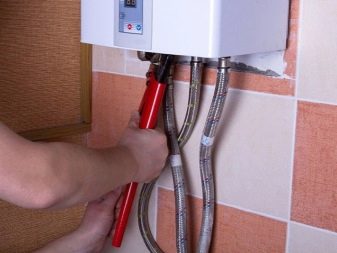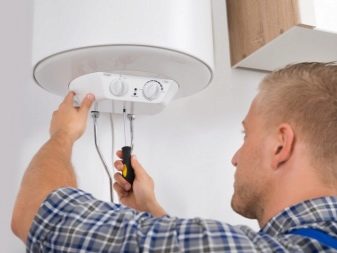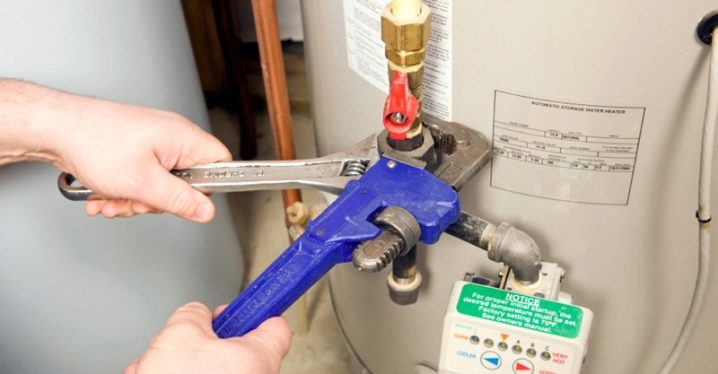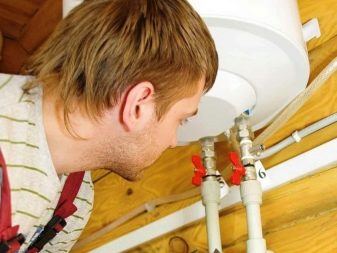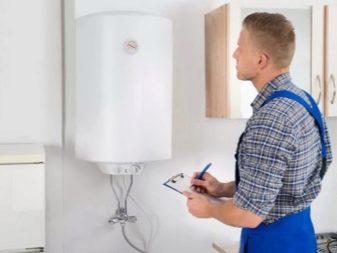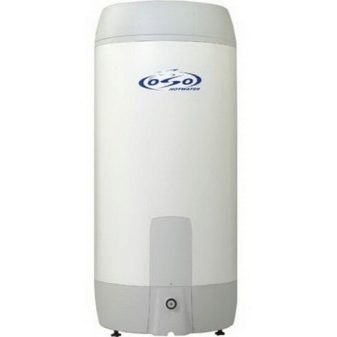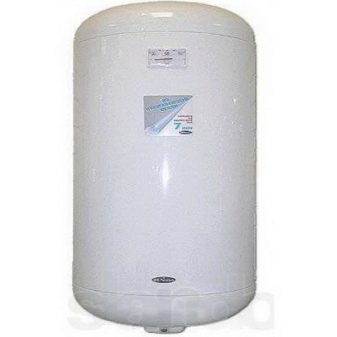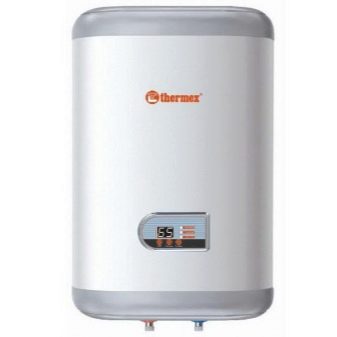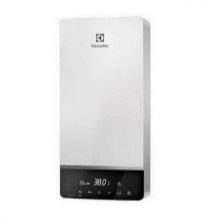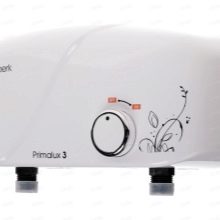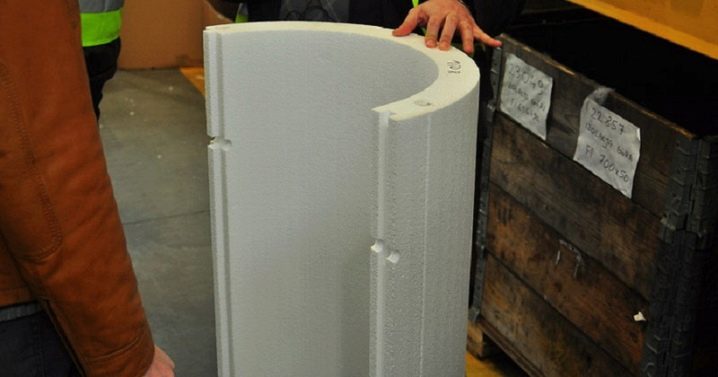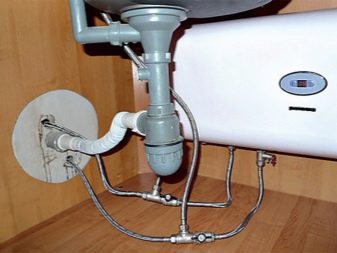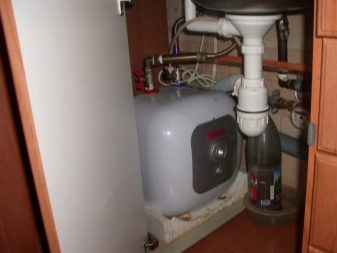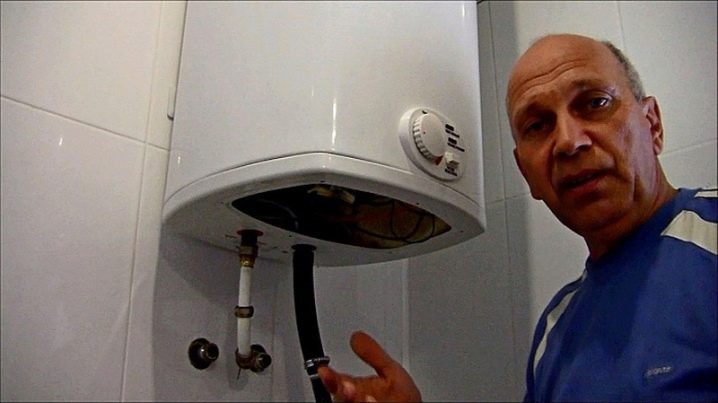How to choose and install a water heater?
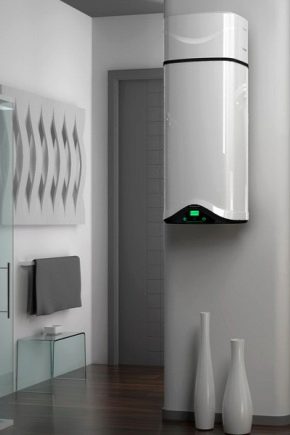
Turning off the hot water in our time - a fairly frequent phenomenon. This happens in connection with repair work or as a preventive measure. However, this brings a number of inconveniences to residents. In order to have a hot water supply constantly, many install water heaters. They become an indispensable assistant in the apartment, house or cottage, and you can pick them up for every taste.
Special features
Water heaters have several varieties, each of which has its own characteristics. When choosing it is necessary to take into account the requirements for an instrument of one kind or another, as well as carefully study the installation scheme in the room.Water heaters can be of several types according to the method of their placement - vertical, horizontal, recessed.
Quality water heaters should have a number of features:
- should be able to protective shutdown;
- have the function of protection against overheating;
- production materials must be of high quality;
- the heating element must be coated with an anti-corrosion compound;
- there must be good thermal insulation;
- availability of energy saving features.
The manufacturer must give a guarantee on the goods so that in case of problems you can contact the service center.
Kinds
All the variety of modern water heaters is divided into two subspecies:
- electrical;
- gas.
Each of them, in turn, has its own varieties.
Electric water heaters can be:
- cumulative;
- flow-through;
- flow-accumulative;
- in bulk.
Gas devices are divided into:
- accumulative;
- flow-through.
But there is also a new kind of water heater - indirect, which is also worth mentioning. In order to determine the choice of a suitable water heater, it is necessary to understand all its variants.Electric water heaters have differences in the design of the system, as well as the principles of operation.
Accumulative electric water heaters also have a second name - a boiler. Happen cylindrical or rectangular shape. Their volume can range from 30 to 200 liters. Heating water occurs due to special heating elements, the number of which may also be different. You can turn them on both simultaneously and separately to save energy.
Thermometers are used to control the water heating temperature, and thermostats are used to maintain it. Accumulative water heater always contains a certain amount of water.
It is heated by one of two elements.
- TENA (tubular electric heater). It is inexpensive and easy to operate and repair. They can be purchased at any store. TENY have the only drawback - a long time of heating water.
- Spiral heating element. They are expensive and more difficult to repair and replace. But they are able to quickly heat a large amount of water, as well as maintain the required temperature.
The principle of operation of this type of water heaters does not depend on the installed heat element. As soon as a certain temperature is reached, the heating is turned off. The temperature is maintained automatically. But after the cooling took place, or a new batch of cold water was added, the heating element is turned on. Water heaters of this type most often have two modes: automatic heating or manual.
For long-term maintenance of water temperature is often used insulation. It is placed between the hull and the tank. The case itself does not heat up, and the water inside will be hot even during the day.
The advantages of electric storage water heaters include:
- one-time supply of water to several water points;
- low energy consumption;
- slight cooling of water;
- temperature stability of the water supplied;
- ease of use;
- large selection of devices.
There are also a few drawbacks:
- large dimensions of the apparatus;
- long heating time.
There is also the easiest option - manual water heaters without a thermostat.But they are extremely inconvenient, and can also quickly fail if the device is not turned off in time.
Water heaters with separate inclusion of several heating elements are very convenient. They can be installed two or more. Therefore, it becomes possible to use heating in several modes. The most powerful is the inclusion of all TENov. This allows you to quickly heat a large amount of water. To maintain the temperature, as well as a small heating, you can use one or two heating elements. In this mode, there is a significant energy savings.
Flow-through water heaters are smaller. They are a small box that is placed on the wall. It is also installed TEN, having the form of a spiral, as well as a small tank. In this embodiment, the heater has a flow sensor. It turns on the heater when the valve is opened. After it closes the sensor turns off the heater. And also there is a thermostat with which you can set the desired water temperature. It can be in the form of a lever, a button or located on a touch screen.
Instantaneous water heaters, in turn, are divided into:
- pressure head;
- free-flow.
Pressure water heaters are distinguished by the fact that they are connected to a centralized water supply system. They can supply hot water immediately to the kitchen, bathroom and toilet. Power of such devices varies from 8 to 32 kW. More powerful ones need to be powered from a 380 watt outlet.
Non-pressure water heaters must be connected to cold water. They have a hose or tap. Such devices are well suited for questioning.
It should be noted that when installing a pressure and non-pressure water heater, a grounding device is necessary. Power is better to carry out separately due to the high power devices. They need to be used carefully, as water can get into the electric device, which can lead to a short circuit and even fire. Therefore, it is better to connect directly to the electrical panel with a separate machine and the presence of a UZO.
Instantaneous water heaters can be controlled in two ways.
- Hydraulically - using a flow sensor. It turns on or off the heating element. May have several power modes that are changed manually.
- Electronic - using a microprocessor.He is able to maintain the desired temperature using special sensors.
Hydraulic control can heat the water slightly - by 20-25 degrees Aim. Therefore, in summer the water will be hot, and in winter it will be quite cool.
The advantages of this version of water heaters:
- continuous hot water supply;
- electricity is saved, as it is used only with water supply;
- small sizes;
- easy installation;
- ease of use apparatus.
Among the shortcomings can be identified:
- the need for a separate power supply line;
- The temperature of the water depends on the flow.
Electronic control helps to warm the water stronger, because they have high power. But their price is much higher. Their advantage is to obtain the desired water temperature at any time of the year.
There are also specific models of instantaneous water heaters. These include a tap equipped with a water heater. This option is perfect for giving or a country house. It looks like an ordinary mixer, only has a larger size. It contains a heating element and is connected to the mains.
Such a device has several modes of operation:
- off state, at this time it is de-energized;
- cold water - heating off;
- hot water - the heating is turned on, the water heats up in five to ten seconds.
Temperature adjustment occurs by increasing or decreasing the water pressure.
This type of water heater has its undeniable advantages:
- very fast warming up of water, it can cope with large volumes of water and even quickly fill a bath for swimming;
- no changes in temperature of the water supplied;
- it is very compact and does not take up additional space in the room;
- fits perfectly into the interior;
- has a low cost compared to other versions of water heaters - this is the most affordable option.
The disadvantages include:
- high power consumption;
- has a lower throughput when compared with a gas column.
When choosing such a device, it is necessary to pay attention to its safety.
- The water heater must have an RCD that protects against a sudden electric shock.
- Overheating protection must be installed.The sensor should turn off the heat at a temperature of + 60 degrees Celsius.
- The impossibility of "dry" inclusion. The device will not turn on in the absence of water or its very weak pressure.
- Must be protected from water hammer.
- All parts of the water heater must be protected with waterproof materials and be sealed.
Instantaneous storage water heaters are a combination of two variants of such devices. They have a boiler, often of a small size (up to 30 liters), as well as a flow-through unit. With low consumption of hot water, it is fed from the tank, with large volumes - a heating element is used.
This type of water heater combines several positive aspects, which include:
- small dimensions of the device;
- constant water temperature;
- fast heating;
- water supply to several points;
- convenience;
- easy installation
But it is worth considering that such units are found on the modern market quite infrequently.
Bulk water heaters are good in the absence of plumbing. They are perfect for giving. They represent a tank with heating elements that heats the water.There is a thermostat to set the temperature of the water. There are models with and without pump.
Such devices have the following functions:
- setting and maintaining the required temperature;
- automatic heating shutdown;
- availability of indicators.
Bulk water heaters are produced only in Russia.
The most common manufacturers are:
- Alvin EVBO;
- "Fairy tale";
- "Success";
- "Aquarius".
These devices operate from the electrical network and are connected to a 220 V outlet.
Accumulative gas water heaters have a lot in common with electric.
They consist of:
- tank with insulation;
- magnesium anode;
- pipes for hot and cold water;
- burners;
- gas duct;
- exhaust hoods;
- control unit.
After the boiler is filled with water, the burner is turned on using piezo or electric ignition, water is heated, which stops as soon as the set temperature is reached. This unit is equipped with a draft sensor and a flame controller for safety. The combustion chamber can be open or closed. In the first case, the products of combustion go through the chimney, in the second - through a special pipe.
The advantages of such models include:
- low cost of energy;
- the ability to connect multiple points simultaneously;
- high heating rate;
- uniform water temperature;
- ease of operation.
Among the shortcomings can be identified:
- the need for the design of the chimney with an open chamber;
- high cost of installation.
Flowing gas water heaters are distinguished by the fact that water does not accumulate in them. After turning on the tap, it heats up as it passes through the water heater.
Such devices consist of:
- the small case fastening to a wall;
- burners;
- heat exchanger;
- branch pipes;
- chimney;
- control unit of control.
In order to turn on the water heater, you need to open the tap or press the button. The burner ignites by ignition and heats the water in the heat exchanger. Devices can be both low and high power (from 11 kW to 30 kW and more).
The advantages of such water heaters include:
- uninterrupted supply of hot water;
- water supply to several points;
- almost instantaneous heating;
- ease of use and ease of repair;
- compact view of the device.
As for the shortcomings, they are much smaller:
- working capacity depends on gas and water pressure;
- complexity of installation.
In the absence of gas in the apartment or house, you can use cylinders with liquid propane. For him are available for sale special water heaters. When using this method, you must especially carefully follow the rules for safe use of devices.
Indirect water heaters are distinguished by the fact that they operate from a heating system boiler.
They consist of:
- insulated tank;
- anode;
- brass heat exchanger;
- hot and cold water inlets;
- control unit.
The action of this type of water heater is based on connecting to the heating circuit. Water is supplied to the radiators, as well as to the boiler, where it is heated and supplied.
These boilers have several advantages, including:
- increased performance;
- low cost of hot water:
- water is immediately supplied hot;
- cools down quite slowly (up to 4 degrees per day);
- ease of use.
Like all devices, indirect water heaters have several disadvantages:
- high cost of equipment;
- cumbersome;
- insignificant heat extraction from heating
Material
In storage water heaters, the most important is the material of manufacture of the tank. They can be from ordinary steel or stainless. Normal additionally coated with enamel. Naturally, stainless steel tanks are safer and more durable. Enameled same quickly come into disrepair. But, accordingly, stainless steel are much more expensive than usual. To extend the life of enamel, magnesium anodes are additionally installed, which must be periodically changed. Their condition is monitored by the sensor.
As for instantaneous water heaters, they can be made from:
- copper - it quickly heats the water, as it has excellent heat-conducting properties;
- stainless steel - such products are durable, but you need to consider that water should not be very hard;
- plastic - they are not very durable, but they are low cost.
The most reliable devices are copper. But the price they have is quite high.
Dimensions
The sizes of water heaters depend on their type. Flow models are always much smaller than cumulative ones.Flow-through can be sizes from 190 mm to 150 mm to 300 mm to 200 mm, while accumulative can be from 420 mm to 900 mm to 600 mm to 1200 mm. The latter sizes depend on the water tank. It can have a capacity of 30 to 200 liters.
Choice and installation do it yourself
Before you purchase and install a water heater, you need to decide on the choice of a suitable device.
Need to consider:
- hot water consumption;
- the number of points connected to the system;
- modes of use;
- main characteristics - type, volume, power, performance;
- shape and material;
- installation method.
Only after all the parameters are defined, you can safely go to the store for a purchase.
Before starting work on the installation and connection of the water heater, it is better to prepare all the necessary tools:
- roulette wheel;
- perforator or hammer drill;
- fasteners;
- adjustable and ordinary keys, and also pliers;
- tees for connecting to the water supply;
- stop valves;
- sealants;
- flexible hoses.
And also it is necessary to take into account the features of the connection, such as pipe buildup, stroke. In this case, it is also worth buying materials in advance. In addition, the connection of the water heater depends on the type of pipeline in the house or apartment.
- Polypropylene pipeline. To work with him you will need a soldering device and a pipe cutter. All connecting devices must be purchased from appropriate materials. In the case of an open pipeline, the work will be quite simple; if communications are hidden, they will need to be opened.
- The pipeline from metalplastic. This type is usually not hidden, so the work will be easy. Fitting is used for the installation, their choice is very extensive, so there will be no problems with the purchase.
- Steel piping. To work with this option will need a welding machine. But you can also use a special "tee-vampire." This is the same clamp that fits over the pipe and is fixed with screws. Rubber gasket should be used for sealing. After its installation a hole is made in the pipeline. A tap and a hose suitable for a water heater are installed at the outlet.
It is also better to draw a diagram of the connection of the water heater and designate the connection points to the water supply.
Immediately before installation you need:
- release and prepare a place for installation;
- make sure the wall is strong enough;
- to ascertain the quality of wiring, as well as to choose the right one for installation;
- make sure that the water pipes are working.
For error-free installation, be sure to read the instructions for the heater. Immediately before installation it is necessary to turn off the water and also to turn off the electricity. To connect high-power apparatuses, a three-core copper wire with a thick cross-section of wire, a counter of at least 40 A, a socket with grounding, a switch and an insulating tape will be needed. Great attention to the strength of the wall must be paid when installing overall boilers. When installing it, anchors and extra strong hooks are used. Devices with a volume of more than 200 liters are more convenient to place on the floor.
It is better to make the installation in a pair with an assistant to facilitate the process. Installation of flow-through and storage devices is performed in the same way.
The first step is to install on the wall.
- It marks the lower installation line of the boiler. Next, measure the distance to the mounting plate. With special care, you need to go to the markings of the upper boundary so that the top of the water heater does not rest on the ceiling.
- Next, you need to make holes for fasteners. For concrete and brick, you will need a power drill with a pointy drill. For a tree it is possible to use the usual. The diameter of the tip must be less than the diameter of the dowel.
- Then you need to drive in parallel two dowels, tighten the anchors and hang the water heater.
The second stage is the connection to the water supply. Using flexible hoses or plastic pipes you need to connect the device to the water supply. The use of polypropylene pipes will cost more and work will be more difficult. Next, you need to insert pipes into the main water supply. When connecting the boiler, you need to pay attention to which pipe to connect to cold and which to hot water. They are marked in colors - blue for cold, red for hot water.
On the pipe for cold water you need to put a special check valve, which relieves increased pressure. This happens automatically and prevents the unit from breaking. If such a valve is not included, it is better to purchase it yourself. To install it, you need to wrap a FUM tape at one end for better insulation and connect it to the valve.The other can be left without sealant and screwed to the pipe.
When installing the instantaneous water heater for rare use, it can be connected to the shower hose. And only cold water is connected to the unit itself.
For this you need:
- shut off the water supply;
- cut the pipe;
- cut the thread;
- wind the seal;
- connect tee;
- put the crane;
- Connect to the boiler with a flexible hose.
Check tightness, for this you need to turn on the water, fill the boiler and leave for a while. If there are no leaks, you can connect the device to electricity. The third stage of installation is the connection to the grid. Usually the kit includes a cable and plug, but in case of absence, you will need to purchase them.
When working with the mains, it is imperative that you follow the safety instructions.
- The first step is to install a grounded outlet. After that you can connect the boiler to the network.
- After connecting, the indicator light comes on. Next, you can customize the water heater: set the temperature, the heating time.
Now the installation of equipment can be considered complete.
Installing an outdoor water heater is different only in that it does not need to be suspended. It is also attached to the wall, it is connected to the water supply and power supply.
Gas
Installing a horizontal gas water heater is more complicated than an electric one. In this matter it is better to turn to professionals. But in the case of self-installation, you must strictly follow the instructions, designations and rules. Ceiling height must be at least two meters, and the area of the room is more than 7.5 square meters. meter In addition, there should be a window in the room, besides, there must be a door in the room. Most often, such devices are installed in the kitchen, next to the gas pipe.
A very good way to detect gas leaks is to install a gas analyzer. Such a device detects the leakage of propane and gives a warning signal. But ventilation is also required. For the gas boiler to work properly, a chimney must be connected to it. It can be included in the general system, or it can be displayed separately directly on the street. It should not have more than two bends at right angles, and its total length should be no more than three meters.When installing equipment on a wooden wall, the chimney should not be in contact with it. Be sure to lay the insulation, for example, from mineral wool.
You need to know that the gas water heater should not be placed on the supporting wall. The distance to the opposite wall must be at least one meter. Gas pipes must not be installed in walls. But also it is necessary to take into account that gas equipment should not be placed above the stove. It is undesirable for the water heater to be constantly exposed to sunlight and overheat. In order to check the tightness of gas pipes, you can use regular soap. It needs to be dissolved in a container with water, and then applied with a brush to the pipe connections. If bubbles appear, there is a leak. And it needs to be urgently eliminated. Checking pipes for leaks is prohibited by fire. This can lead to irreparable consequences.
Electric
Electric water heater is most often installed in the bathroom. In order to save space, it is better to place it over the toilet, because there is free space above it.It is not recommended to install the device over a sink or sink to avoid water getting into the electrics. To install and connect the unit to the power supply in the toilet, you must install an outlet with grounding.
Tips
In order to quickly, reliably and correctly install the water heater with your own hands, as well as safely use it, better follow the following tips:
- it is best to locate the device closer to the point of connection to the water supply;
- during installation, it is necessary to take into account the individual features of the unit - vertical or horizontal, the place where the communications are connected;
- it can be installed at any height, as long as there is space to the ceiling;
- if the water pressure in the apartment or house is small, it is better not to install the water heater high, the water will flow poorly;
- to the place of fastening of the boiler there should be an approach for more convenient use and repair;
- to connect an electric water heater, be sure to use a grounded power line;
- it is impossible to turn on the device if there is no water in the tank, it can lead to breakage of heating elements;
- it is recommended once or twice a month to turn on the device at maximum power for several hours in order to destroy bacteria appearing in the tank;
- on cold water, you need to install a strainer, and if the water is too hard, then it is better to install additional cleaning;
- every few years, it is necessary to clean the tank from the occurring scale and replace the magnesium anode;
- if the boiler is used continuously, it will be more economical not to disconnect it from the network, since it takes less energy to maintain the temperature, if it is needed several times a day, it is better to turn it off;
- when using a flow-through water heater it is better not to allow a constant flow of water, so the electricity goes more, if you close the tap and open the water only as needed, you can save money.
If rusty water starts flowing from the boiler, it means that the copper pipe to which it is connected will rust. It is better to replace it with metal-plastic or polypropylene. If the pressure of the supplied water fell, then the problem may not even be in the water heater itself, but in the faucet. There could clog the aerator, it must be removed and cleaned.
Successful examples and options
It is possible to install a water heater anywhere, where it is really needed - in an apartment in a high-rise building, in a private house, and in a country house. For any room you can choose the most suitable option. You can pick up overall cumulative boilers or compact flow boilers. The choice of water heaters is very large. Therefore, it is not possible to determine exactly which firm is better. Each manufacturer is good in its own way, and you need to choose the appropriate option from personal preferences and individual features of installation and use.
Among storage water heaters highlight the following:
- Thermex - the most affordable water heater having a stainless steel tank;
- Real - boilers of good quality, the only negative - it is difficult to find consumables;
- OSO - very high quality units, but are notable for high cost;
- Electrolux (AEG) - a popular company, good quality.
But also to manufacturers producing high-quality goods, include: Timberk, Baxi, Bosch and Gorenje.
Of course, for the modern buyer, along with the quality of the goods, its value is also important.
If we talk about inexpensive, but high-quality models that are suitable for different types of accommodation, the following can be distinguished:
- for giving - Timberk WHEL-3 OSC is an electric flow-through version, has a spout and a shower head, its cost is up to 3 thousand rubles;
- for an apartment - Bosch 13-2G instantaneous gas water heater cost up to 16,500 rubles; Gorenje GBFU 100 E B6 is an accumulative electric boiler, has two heating elements, costs up to 15 300 rubles;
- for a private house - Electrolux NPX 8 Flow Active flow-through electric water heater, has electronic control, costs up to 14,700 rubles; Baxi Premier plus 200 indirect water heater, has the ability to install heating elements, costs up to 52,200 rubles.
A good example of economical use of boilers is the insulation of its tank. To do this, you can use foam or izolon. Insulation can be attached to the glue or tied to the tank. It helps the water to cool more slowly, thus saving energy. But another method of warming is also possible - install a smaller tank inside the larger tank. With regard to the installation of water heaters, the choice of options depends primarily on the safety factors.
Wall mounting is the most common option. And also it is not too safe in case the bathroom and the bathroom are combined.It is better not to hang it where it will interfere, as it is possible to strike. If there is a niche in the room or a recess in the wall, then the water heater can be installed there. But such installation will be more problematic, costly and long-term.
It is possible to install a water heater under the bath, but only if it is dry there and the water does not get there. And also there should be enough space for ventilation. There is an option to install a boiler in the hallway, pantry or kitchen, if planning allows. Thus, today the solution to the problem of hot water in an apartment or house is affordable. Any kind of water heater is the best option for using hot water at any time of the year.
Modern manufacturers offer buyers an extensive product line for every taste, and also have the opportunity to choose the device in a comfortable price range. Installation of an electric water heater can be performed independently at home. It is necessary to carefully study the instructions for the device, prepare all the tools and place for installation.Particular attention should be paid to electrical wiring, since it represents the greatest danger.
With gas equipment the situation is more complicated. To install the gas column is better to contact the experts, in addition to its installation, you must obtain permission. The choice of model and version of the water heater depends only on the characteristics of housing and personal preferences. By installing a water heater, you can forget about the problems during periods of disconnection of hot water. And also you can buy special models that can be mounted at the cottage, even if there is no centralized water supply.
How to choose and install a water heater with your own hands, see the following video.

